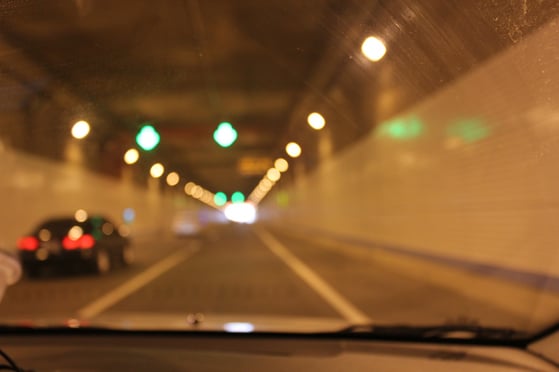Back to articles
Navigate inside tunnels with Bluetooth Beacons

Satellite navigation has revolutionized the way we get around. It’s cheap, fast and easy to use. But there’s one fatal flaw in the system: It simply can’t work underground.
GPS requires line of sight to satellites orbiting the planet. The great advantage of this is that it works seamlessly all over the world, without needing to be connected to a cellular or Wi-Fi network. This works well in open areas but in built-up areas with tall buildings, or in underground tunnels, the system can fall apart.
Enhancements not enough
Combining GPS with phones allowed ‘Assisted GPS’, which uses cell-tower data to increase speed and reliability in built-up areas. Further enhancements have also been made using Wi-Fi hotspot location data and ‘inertial navigation’ – you know where you were when you lost the signal so you can work out roughly where you are now – but no one has been able to accurately and affordably solve the problem of tunnels. Until now.
Waze, the crowd-sourced traffic routing app company, has set about fixing this problem using Bluetooth beacons. The idea is simple. By equipping tunnels with Bluetooth beacons, which can be detected by smartphones, you eliminate the GPS blind spots. The Waze beacons cost around $1,200 per mile of tunnel and so present a much more cost-effective solution than other technologies.
Inertial navigation is great if the traffic is flowing through the tunnel smoothly but it’s not great if traffic is speeding up and slowing down. And if you have tunnels with exits, you really need a more accurate solution.
Bluetooth solutions under trial
The Waze beacons, based on Google’s Eddystone beacon technology, are placed approximately 40 meters apart, giving a location accuracy of around 20 meters. This is more than good enough for mapping and for finding location in case of emergency.
The beacons, currently being trialed in Pittsburgh and Tel Aviv, are a great example of how Bluetooth can solve problems that other technologies struggle with, and add value to existing solutions.
Perhaps the main problem with this is for users concerned about privacy. Users will have to have Bluetooth enabled on their phones for this to work, and grant permission to the app to access it. Communicating with the beacons can potentially allow locations to be tracked in ways that pure GPS can’t be. Most users will be happy to have a more accurate mapping system and users who are concerned that much about privacy will probably not be using it anyway.
This system is likely to prove successful for Waze and also lead to more examples of companies using Bluetooth low energy to improve indoor location services.
It is already possible for beacons to transmit their location directly in their signal, but will private companies who own the beacons allow secure and untraceable location services like GPS does?


